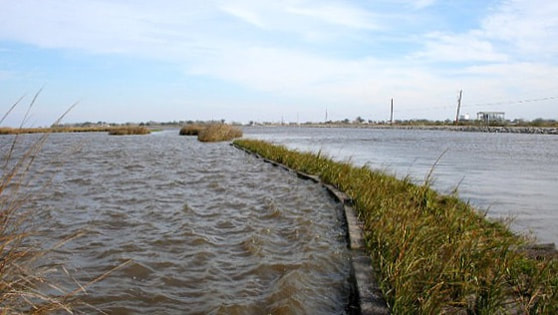Shore Protect Team - The Facts
Getting My Shore Protect Team To Work
Table of ContentsThe Only Guide to Shore Protect TeamFascination About Shore Protect TeamThe Ultimate Guide To Shore Protect TeamShore Protect Team Things To Know Before You BuyHow Shore Protect Team can Save You Time, Stress, and Money.Some Known Factual Statements About Shore Protect Team 7 Easy Facts About Shore Protect Team Shown
Decrease in home worth: As the location tourism is impacted by erosion, so then is the economic situation. Purchasers are much less most likely to look for a beach home that could be ruined anytime by the approaching flooding and erosion emergency. Consequently, property value can go down immensely and influence the entire region.Whether a coastline is just tiny and jampacked or has to shut totally for the security of the community and close-by properties, this significantly influences tourism. Consequently, regional economic climates are influenced (https://www.moptu.com/shrprtcttm). Threat of injury: The increased threat of flooding and structural failings triggers an enhanced threat of injury to neighboring vacationers and community participants

is home to greater than 84,240 miles of coastline with 41% of it revealed to the open ocean. Coastal designers supervise of safeguarding the coast against modifications by lessening the damaging influences of both all-natural and synthetic incidents. Coastline stablizing is straight relevant to their work. Waterside resorts: Due to the fact that coastline disintegration influences tourist, it influences the success of waterside resorts.
The Shore Protect Team Ideas
Coastal commercial services: No visitors means no organization. Coastal state parks: State parks that exist along coasts are at danger of damage.
Soft stablizing is a far better option for the atmosphere and more sustainable overall. Hard stablizing makes use of manufactured frameworks as protection to regulate erosion. Usually, these frameworks are set up at right angles or alongside quit sand activity and minimize the force of waves. A lot of kinds of hard stabilization like seawalls and sheet metal are not optimal for shoreline stablizing.
Things about Shore Protect Team
There's also insufficient proof of their performance depending on the kind of coastline and regional problems. Hard stablizing strategies often tend to be harder to set up and don't match the all-natural visual, sticking out like an aching thumb and hurting regional communities in many circumstances. Coastline sustenance is the process of adding shed sand and debris back to beaches after erosion has happened.
TrapBags help in the procedure of beach nutrients by safeguarding all-natural ecological communities and allowing plants to grow. They're: Eco pleasant: You can use indigenous dirt both to surround and to fill up the TrapBags.

The 6-Minute Rule for Shore Protect Team
Easy to install: Ease of setup means TrapBags can be released quickly in the event of an emergency situation. They can also be set up with no heavy equipment. Economical: TrapBags are suitable for both tiny and big areas of shoreline. They offer a cost effective service to cover tasks of any kind of size.
Incorporated with a high building expense, this has caused boosting usage of various other soft engineering coastal management options such as coastline replenishment. Seawalls are constructed from different materials, a lot of typically reinforced concrete, stones, steel, or gabions. Various other feasible building and construction materials consist of vinyl, timber, aluminum, fiberglass composite, and eco-friendly sandbags made from hemp and coir. The suitable seawall layout relies on location-specific aspects, including bordering erosion procedures. There are 3 primary types of seawalls: vertical, rounded, tipped, and piles (see table below).
Natural obstacles, such as coral reefs and mangrove forests, avoid the spread of tsunamis and the circulation of seaside waters and alleviated the flood and rise of water. A cost-benefit technique is a reliable means to identify whether a seawall is appropriate and whether the benefits deserve the expenditure.
Facts About Shore Protect Team Revealed
A seawall is a static feature which can contravene the vibrant nature of the coastline and hamper the exchange of debris between land and sea. The table listed below sums up some positive and unfavorable results of seawalls which can be utilized when comparing their performance with various other coastal management alternatives, such as coastline nourishment. [] Benefits and downsides of seawalls according to Short (1999) Advantages Negative aspects Long term remedy in comparison to soft beach nourishment.

This can cause beaches to dissipate, providing them worthless for coastline goers. Normally, seawalls can be a successful way to manage coastal erosion, yet just if they are constructed well and out of materials that can endure the force of recurring wave power.
The 3-Minute Rule for Shore Protect Team
The proper seawall design relies on location-specific elements, consisting of surrounding disintegration procedures. There are three main kinds of seawalls: vertical, bent, stepped, and piles (see table listed below).
Natural barriers, such as coral reefs and mangrove woodlands, stop the spread of tidal waves and the flow of coastal waters and mitigated the flood and surge of water. A cost-benefit strategy is an efficient way to determine whether a seawall is ideal and whether the benefits are worth the expenditure.
Shore Protect Team Fundamentals Explained
A seawall is a fixed attribute which can conflict with the vibrant nature of the shore and impede the exchange of debris between land and sea. Advantages and disadvantages of seawalls according to Short (1999) Benefits Disadvantages Long term option in contrast to soft coastline sustenance.

This can create beaches to dissipate, providing them worthless for coastline goers. Generally, seawalls can be a successful way to control coastal disintegration, yet only if they are built well and out of products that can stand up to the force of recurring wave energy.